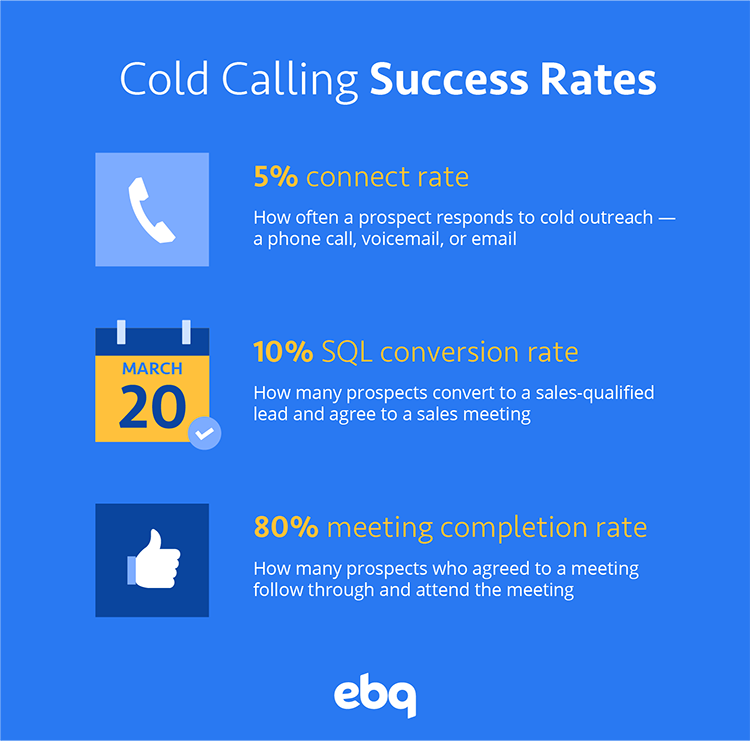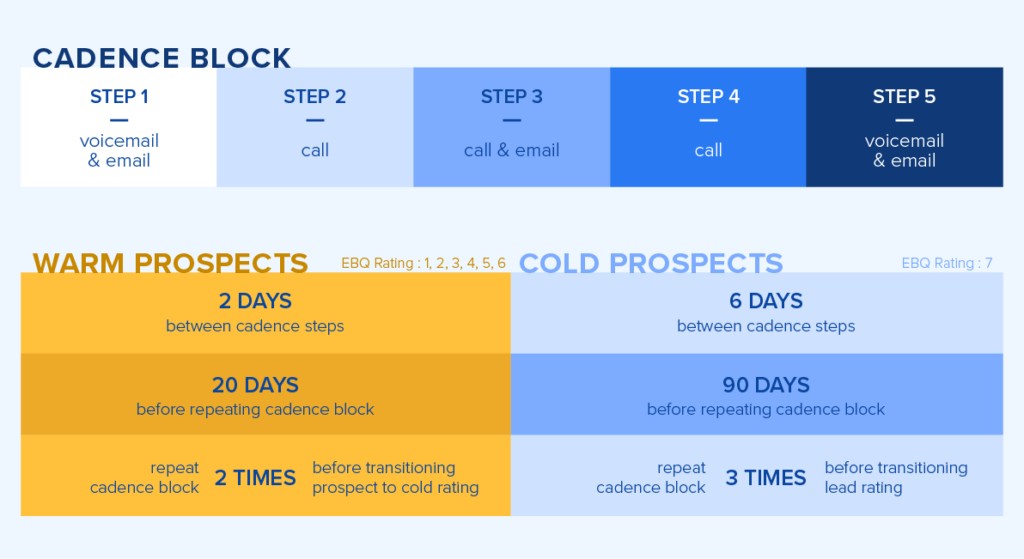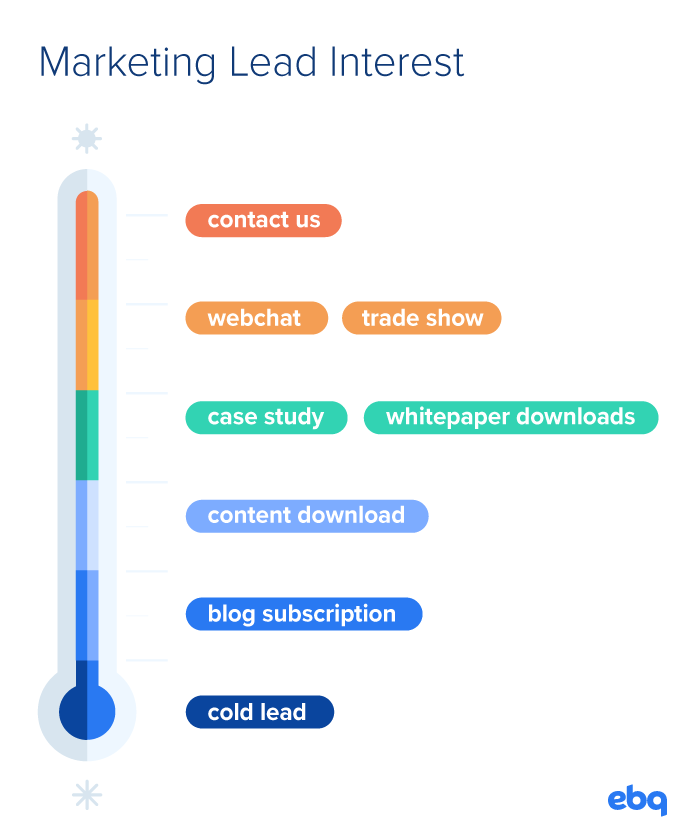Cold calling success rates may be relatively lower than other methods of outreach, but cold calling is still alive and well, especially for B2B companies with high-value solutions. In fact, cold calling can be key to driving market awareness and generating demand for your solution.
Without this direct outreach, it’s difficult for prospects to even know about your solution, particularly in highly competitive markets. Each phone call is an opportunity for your prospects to hear about your brand. Plus, you can use these conversations as a way to gain first-hand insight into your target market.
Before you look into ways to improve your conversations, you need to first evaluate your team’s current cold calling performance. Below, we’ll lay out some realistic cold calling benchmarks then jump into ways to improve your efforts.
B2B cold calling
success rates
In our 15 years of experience in sales development across industries, we’ve been able to determine practical benchmarks for a few key metrics of cold calling success: connect rate, SQL conversion rate, and meeting completion rate.
Keep in mind these success rates are averages and could vary quite a bit depending on your solution and market.

Connect Rate
Connect rate measures how often a rep gets a response from a prospect — whether they answer a phone call or respond to a voicemail or email. We expect to see at least a 5% connect rate from our sales development reps. Although 5% may seem low, it’s a realistic benchmark because people are often wary of responding to cold outreach. The typical B2B buyer may be too busy to answer a cold call, especially from a brand they haven’t heard of before.
SQL Conversion Rate
Meeting Completion Rate
Meeting completion rate measures how many prospects who agreed to a meeting follow through and attend the meeting. Significantly higher than conversion and connect rate, an average meeting completion rate should be 80%. A lower number suggests that there’s been a persisting rescheduling or missed appointment issue, which may indicate a lack of genuine interest being generated.
Sales Close Rate
One of the final pieces of determining cold calling success is how often your sales team closes opportunities initiated by those cold efforts. Though this metric can vary widely, many studies cite a 20% sales close rate as a reasonable average.
Remember the sales close rate doesn’t measure your cold caller’s performance but instead speaks to your closer’s ability to close the deal once a lead is qualified. However, this average can be used to calculate overall ROI from cold calling. Each of these metrics acts as a lever that helps you predict, measure, and improve cold calling success.

Keep in mind that there are several other SDR metrics you can track as well. However, connect rate, SQL conversion rate, meeting completion rate, and sales close rate are high-level metrics you can use to evaluate your cold calling success.
How to improve cold calling success rates
Before jumping into ways to improve cold calling, we want to emphasize the importance of using an SDR team to cold call, versus expecting your closing sales reps to do their own cold calling.
While a sales rep is in charge of converting prospects into customers, a sales development rep is responsible for getting prospects to agree to an initial sales meeting. Studies show a salesperson makes 45 calls per day on average, but we expect our SDRs to make 100 dials per day on average. An SDR is able to devote much more time to the top of the sales funnel.
Aside from designating your team of cold callers, there are a number of factors that contribute to improving cold calling success rates.
Here are 6 factors to consider:
1. Database accuracy
2. Target audience
3. Messaging
4. Follow-up persistency
5. SDR skillset
6. Sales rep skillset
First, let’s talk about evaluating your database’s accuracy to make sure you’re hitting the right accounts.
Database Accuracy
Using an outdated database can decrease your connect rate. That’s because your SDRs will try to reach out to the wrong emails, phone numbers, and even the wrong people. This plummets your connect rate, as no one will be able to answer those calls or return those voicemails and emails.
Therefore, improving your prospect database has a direct correlation with higher cold calling success rates. Make sure you’re investing in a high-quality, dynamic prospect database rather than paying for a one-time static list. That way, you’ll avoid all the risks associated with using poor sales data.
After investing in a good data source, you’ll then need to evaluate how well you’re hitting qualified prospects by defining and continuously refining your target audience.
Target Audience
Aside from data accuracy, you need to look at how well targeted your database is. Otherwise, you risk negatively impacting your connect rate and conversion rate.
If you find that your current target audience hasn’t led to many conversions, consider what are some key correlations between your highest converters. Is it their industry? Their company size? Specific titles within the company? Or is it a specific pain point that drives interest in your product or service?
From these insights, you can ask your SDRs to focus their attention on people and companies that are similar to your biggest accounts. If your SDRs are reaching out to a specific audience with little response, you may need to pivot your targeting to a different segment.
But how do you choose who to contact within the company? It’s important to connect with decision makers because they’re ultimately the ones agreeing to invest in your solution. Targeting these contacts means you’re able to directly respond to any objections they may have right away.
While it’s important to bring a decision maker into the conversation, in some instances, SDRs have higher success reaching out to influencers over decision makers. That’s because influencers often have more time to listen to the entire pitch — making them an easier entry point for cold outreach.
To help your SDRs get past gatekeepers, creating well-defined buyer personas allows SDRs to understand not only who to connect with, but also how to get in front of them.
Your buyer personas also help you consider what your contact’s everyday life looks like. Not everyone is by their desk all the time, so be sure to research what their job title entails to predict when the best time to connect is. For example, someone who’s required to travel a lot for work may not be able to connect with you during busier quarters.
Once you’ve identified your target audience, you can then start to develop a personalized messaging strategy.
Messaging
87% of surveyed prospects say salespeople don’t understand their needs. This shows that, for many companies, their messaging is not landing, resulting in missed opportunities because their reps can’t highlight how a particular solution addresses the prospect’s pain point.
Improving your messaging means increasing conversion rate, meeting completion rate, and connect rate. That’s because highlighting the solution’s value in a way that’s relevant to each individual prospect will pique their interest and get them eager to attend the sales meeting.
When leaving voicemails and emails, personalizing your messaging to fit the prospects’ unique pain points will make them more likely to reach back out to you to learn more — improving your connect rate too.
A best practice is to create a script ahead of time for your SDRs to use. That way, they can spend less time coming up with responses on the spot and more time understanding your prospects.
Keep in mind that the point of the script is to act as a guide for your SDRs; they shouldn’t read scripts word for word. That way, they can keep the conversation natural.
Scripts should be dynamic as well, helping tailor the conversation based on what the prospect seems to resonate with. For example, our scripts will include a list of different value propositions our SDRs are able to choose from.
Depending on the personas you’re targeting, you need to consider creating multiple scripts as well. Your SDRs will be able to personalize their messaging by throwing in some key details regarding their industries and roles.
After trialing a new script, ask yourself:
- Are we able to get the prospects to talk about their pain points?
- Are we getting shut down before we get there?
- Are we able to use this script to solve our prospects’ unique pain points?
Having a script also means you can prepare your team to respond to objections ahead of time. Assuming you’re hitting the right people, try to see if there are common objections that are turning them away from your solution.
Some objection examples include:
- Incumbent solutions
- Technical requirements
- Outreach timing
Messaging is only half the battle. Following up with your calls increases the likelihood of a prospect wanting to learn more about your solution.
Follow Up Persistency
Becoming a great SDR takes more than just charm; it takes grit as well. Think about it: when was the last time you answered a call or an email from someone you didn’t know? As an SDR, you need to know how to get in front of people who have never heard of your brand and make them curious to learn more about your solution.
Without persistence, you will find that your connect and SQL conversion rates will be negatively affected. That’s why it’s always important to always ask yourself, “how do I get in front of people?”
More persistent follow up is one of the main benefits of using an SDR team. They are wholly focused on the top of the pipeline, so they are able to make the required number of touches compared to sales reps who are more concerned with warmer prospects.
One strategy is to create a call cadence. You need to strike a balance between reminding your prospects of your brand and not creating too much friction by being intrusive.

In our example above, we’ve outlined how the touch cadence should differ between warm and cold prospects. Because these prospects are cold leads, it’s important to attempt to reconnect with them over a longer period of time. You don’t want to risk your prospect marking your emails as “spam” or blocking your number.
You’ll also notice the example cadence uses a mix of calls, voicemails, and emails. Using different methods gives your reps more opportunities to connect and to discover which method a prospect prefers.
Persistency is just one of the key traits we look for in our SDRs. We also need to look into developing their other skills as well.
SDR Skillset
An SDR’s role is to ask discovery questions, listen with intent, and persuade the prospect to agree to a meeting within a short conversation.
Hiring skilled cold callers means improving your connect rate, SQL conversion rate, and meeting completion rate. That’s because your SDR should know exactly who to contact, when to connect, and how to connect.
Here are a few indications of whether or not your SDR is performing well:
- Connect rate: If this number is lower than 5%, it could mean that your SDR is not taking your prospects’ communication preferences into account. For example, some people detest cold calls and prefer to connect over email before agreeing to a meeting.
- SQL conversion rate: While we expect at least a 10% conversion rate, we’ve seen numbers upwards of 25%. However, a high conversion rate does not equate to a high success rate. Sometimes, it means that your SDR is a little too good at convincing people to a sales meeting — including the wrong person who doesn’t qualify as a great prospect to you.
- Meeting completion rate: Your SDRs are responsible for ensuring prospects actually attend their sales meeting. They need to create email reminders and confirmations to make sure your prospect knows when the meeting is happening. It’s also best practice to immediately send a calendar invite after they’ve agreed to a call.
- Talk-to-listen ratio: Ideally, your SDR should speak 55% of the time. Since cold calls are such short conversations, the SDR needs to make room for the prospect to elaborate on their current situation and pain points while the SDR steers the conversation to a sales meeting.
But an SDR is only responsible for a quarter of the race. To finish the race strong, you need to hire great salespeople.
Sales rep skillset
To follow through with the conversations your SDRs and prospects are having, you’ll need great salespeople to create a human connection between your brand and your prospect.
Without a great sales rep, you’ll decrease your sales close rate dramatically. To make sure your sales team is closing those deals, you need to hire effective salespeople who can prove value by showcasing how the solution will solve your prospects’ unique pain points and contribute ROI.
A sales rep needs to do more than just show up to the sales meeting in order to convert prospects into customers. For advice on improving this final close rate, we’ve previously outlined how to close the deal, including: creating leverage, involving stakeholders, and emphasizing pain points.
Additionally, there are a few ways your SDR team can help salespeople and your prospects start out on the right foot:
Utilize the warm transfer technique
A warm transfer happens when an SDR hands off the conversation to the sales representative at the beginning of the sales meeting. Since the SDR is already a familiar face for the prospect, the SDR can kick off the call and introduce the sales rep to the prospect in a more personalized way.
Allow SDRs to take ownership over appointment setting
Your SDRs are the ones who got your prospects to meet with your sales team, so they should also be the ones in charge of scheduling those appointments. With full visibility into your salespeople’s calendars, SDRs can schedule appointments during the cold call and quickly reschedule meetings when needed — improving your prospect’s experience.
Let SDRs matchmake sales reps & prospects
If you have a limited number of sales reps or rigid territory assignments, you may not be able to match prospects with specific sales reps. But if you have the luxury to develop a large enough team, consider the fact that prospects will respond to unique personalities differently. Be sure to note how to communicate with the prospect so your sales team knows how to effectively nurture them.
Remember: without strong closers, your cold calling success rates will suffer. An SDR can do everything in their power to convert sales-qualified leads, but you need an effective sales team to close those deals. Always look for ways to improve the handoff between teams and make a great first impression for your salespeople.
Using both cold & warm calling techniques
Although cold calling is important, you’ll miss out on a lot of opportunities if you don’t pursue warm leads as well. It’s the reason why many companies opt to create an allbound SDR team where reps both perform outbound cold outreach and follow up with inbound leads.
Warm inbound leads from marketing are critical, as it provides prospects who have shown an interest in your company even before you try to contact them. Warmer leads mean your SDRs don’t need to work as hard to convince these prospects to convert.
Some examples of how inbound marketing leads are generated include:
- Submitting a contact form
- Subscribing to your blog
- Giving you their contact information during trade shows
In order to fully utilize an allbound SDR team, you need to combine your outbound efforts with inbound marketing into what we refer to as a demand generation strategy.

The goal of inbound marketing is to get prospects interested in your solutions by establishing credibility within your industry. It’s why many companies opt to host webinars, attend trade shows, and even write blog posts. By establishing your credibility, you’re compelling your prospects to take the first step in their buyer’s journey.
The result? More cold leads converted.
The benchmarks we provided in the beginning of this post should help you gauge your own connect rate, SQL conversion rate, meeting completion rate, and sales close rate.
Remember that increasing your cold calling success rates is more than just looking for ways to improve SDR performance. Optimizing these 6 factors will result in a direct increase in those metrics:
- Database accuracy
- Target audience
- Messaging
- Follow-up persistency
- SDR skillset
- Sales rep skillset
If you’re looking to improve your cold calling, EBQ provides an experienced SDR team that can help fill your pipeline with qualified leads. We review progress with you every step of the way to ensure you’re reaching your metrics of success. Contact our specialists to learn more.



